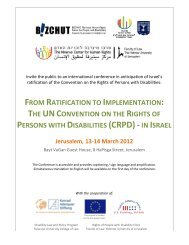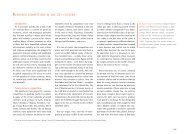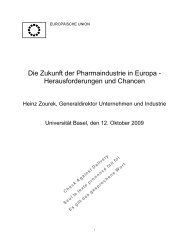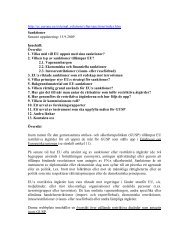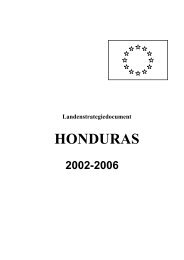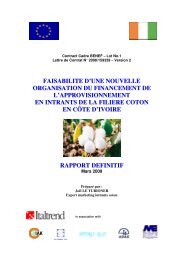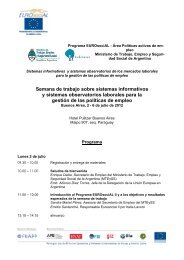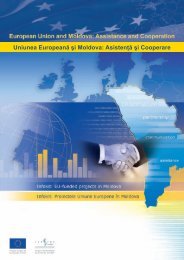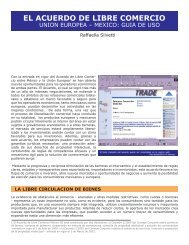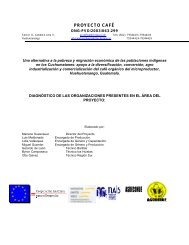Vision Group Report: Invigorating the Indonesia-EU Partnership
Vision Group Report: Invigorating the Indonesia-EU Partnership
Vision Group Report: Invigorating the Indonesia-EU Partnership
Create successful ePaper yourself
Turn your PDF publications into a flip-book with our unique Google optimized e-Paper software.
Nowadays, in trade relations – even between developed<br />
and developing countries – tariffs are not <strong>the</strong> important<br />
challenge. Effective market access means meeting all<br />
<strong>the</strong> technical and sanitary related regulations, to ensure<br />
access goes beyond so called ‘naked access’ at borders but<br />
amounts to effective market access including provisions<br />
covering TBTs, SPS and NTMs.<br />
5.1 tarIffs<br />
The scope for tariff reductions in an <strong>EU</strong>-<strong>Indonesia</strong>n bilateral<br />
context is limited by <strong>the</strong> existing level of tariff liberalization<br />
especially within <strong>the</strong> frameworks of WTO and ASEAN.<br />
A simple comparative analysis of tariff lines shows that<br />
those are already relatively low. The simple average of<br />
MFN tariff applied, is 5.3% for <strong>the</strong> <strong>EU</strong> (2009) and 6.9% for<br />
<strong>Indonesia</strong> (2007) The <strong>Vision</strong> <strong>Group</strong> <strong>the</strong>refore recommends<br />
a move to zero tariffs for 95% of tariff lines (covering<br />
at least 95% of trade value) in a period of maximum<br />
9 years. A best-endeavour clause on <strong>the</strong> remaining 5%<br />
should permit fur<strong>the</strong>r progress.<br />
Moreover, <strong>the</strong> <strong>Vision</strong> <strong>Group</strong> recognises that in an<br />
asymmetrical relationship <strong>the</strong> speed of implementation of<br />
tariff reductions takes into account <strong>the</strong> different levels of<br />
development. Still, as 60% of <strong>the</strong> tariff lines of <strong>the</strong> two<br />
parties are between 0 and 5% and 20% are already at zero,<br />
gains from tariff measures would be expected to be small.<br />
However, <strong>the</strong> positive impacts from simply dismantling<br />
tariffs cannot take into account <strong>the</strong> dynamic gains to be<br />
generated from, for example, increased investment, <strong>the</strong><br />
liberalisation of services and <strong>the</strong> dismantling of non-tariff<br />
barriers.<br />
Below, an example is given of how an asymmetric tariff<br />
liberalisation could be implemented. Legend: T=time in<br />
years; Commitments: % of tariff removed<br />
Commitments<br />
100%<br />
75%<br />
50%<br />
25%<br />
<strong>EU</strong> INA<br />
T o T 3 T6<br />
T 9<br />
Different speeds should apply to different products of<br />
different “sensitivities”. The least sensitive ones should<br />
be liberalised faster with <strong>the</strong> greater parts of commitment<br />
implemented at <strong>the</strong> time of entry into force of <strong>the</strong><br />
agreement. The most sensitive ones could be liberalised<br />
more slowly. This approach should be adopted to give<br />
enough time to <strong>Indonesia</strong> to improve its preparedness for<br />
market opening, allowing for a higher likelihood that <strong>the</strong><br />
benefits from <strong>the</strong> <strong>EU</strong>-<strong>Indonesia</strong> CEPA will be shared more<br />
evenly.<br />
Finally, safeguards and provisions on sensitive sectors may<br />
be incorporated. At <strong>the</strong> same time, credibility and ambition<br />
would be negatively affected if such provisions and <strong>the</strong>ir<br />
application would not remain truly exceptional and subject<br />
to objective criteria.<br />
5.2. tbts and ntMs<br />
Market access for goods depends critically on overcoming<br />
or avoiding sanitary (SPS) and technical standards<br />
(TBT) issues and sometimes o<strong>the</strong>r non tariff measures<br />
(NTMs) such as onerous administrative requirements<br />
and excessive licensing. TBTs are technical regulations,<br />
standards, conformity assessment procedures and<br />
similar regulatory requirements (e.g. inspections,<br />
approvals) that might restrict trade. NTMs are a broader<br />
concept encompassing all barriers to trade o<strong>the</strong>r than<br />
tariffs and arise in many different forms (quotas, custom<br />
procedures, etc). The costs created by TBTs and SPS are<br />
a high burden, particularly for SMEs. Overcoming <strong>the</strong>ir<br />
negative side effects <strong>the</strong>refore becomes necessary.<br />
Key instruments in <strong>the</strong> TBT field supported by <strong>the</strong><br />
<strong>Vision</strong> <strong>Group</strong> are:<br />
» Promotion and enhanced effectiveness of technical<br />
assistance in <strong>the</strong> TBT area.<br />
» Greater harmonisation of technical regulations,<br />
standards and conformity assessment procedures,<br />
notably through greater use of international<br />
standards.<br />
» Pursuit of good regulatory practices to promote less<br />
onerous and burdensome technical requirements,<br />
including in <strong>the</strong> field of conformity assessment.<br />
» Enhanced implementation of TBT transparency<br />
provisions with a view to ensuring that WTO<br />
23




